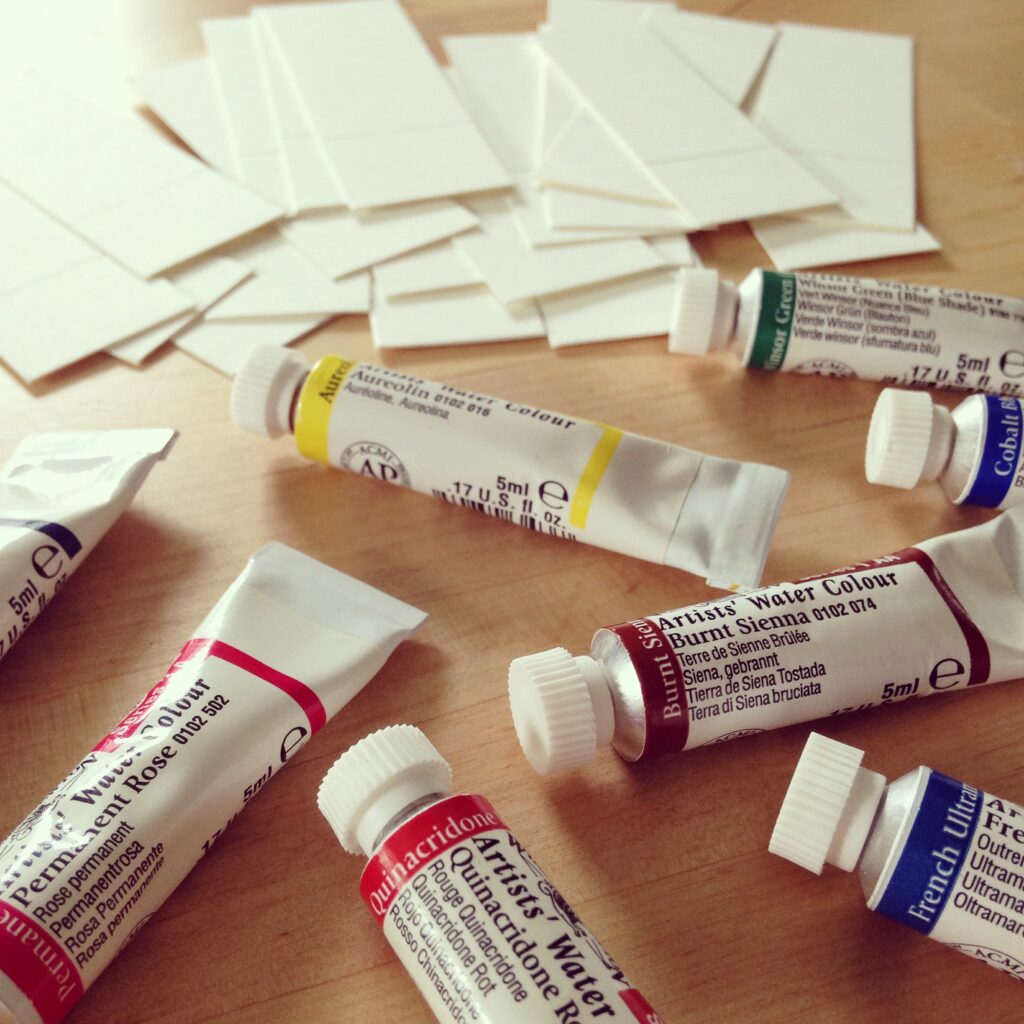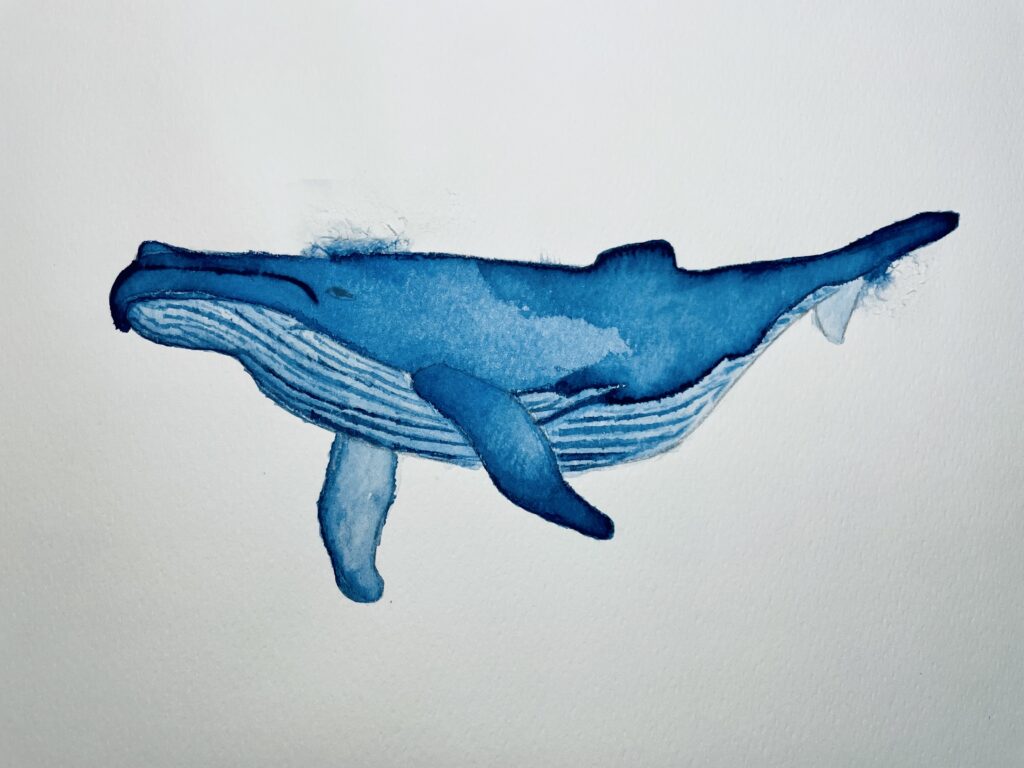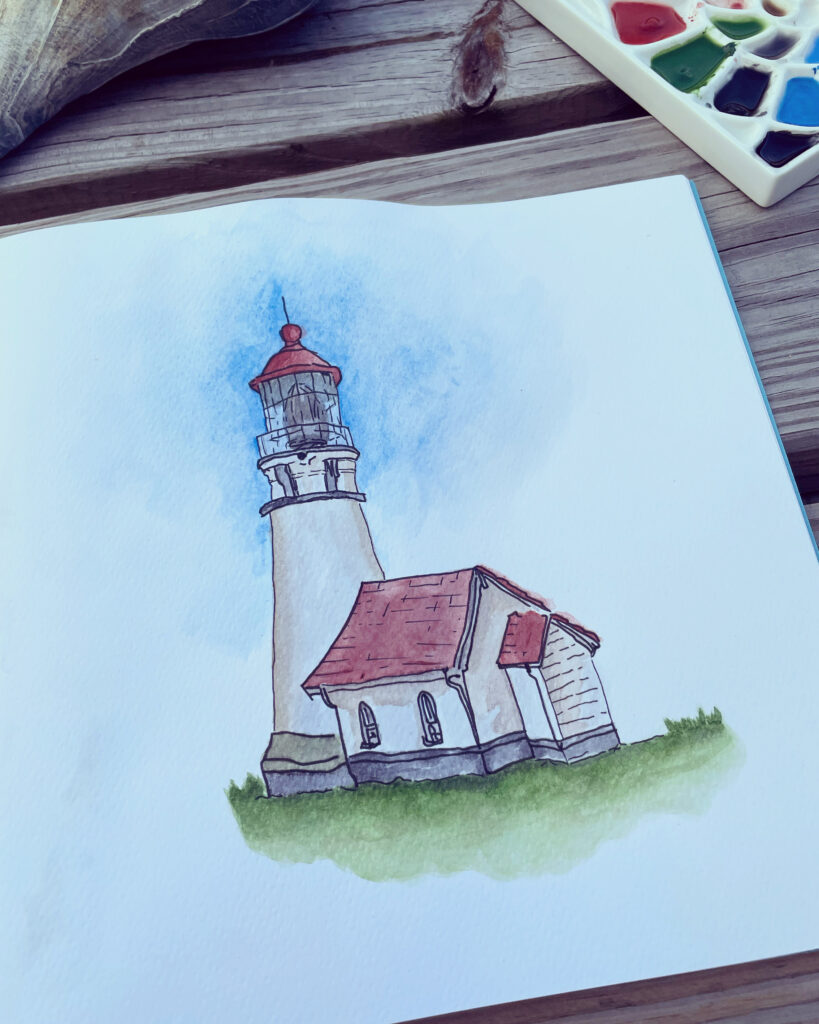
Watercolor has a mind of its own.
Unlike oil or acrylic paints, which can be controlled and refined with precision, watercolor moves freely – blending, bleeding and creating shapes that will often surprise you. This unpredictability is both its greatest challenge and its most beautiful quality.
For years, I put my artistic side on hold out of necessity. When I finally picked up a brush again, I struggled to find a medium I could connect with. I tried working with acrylic again, convinced that mastery would come with time. But no matter how much I practiced, something always felt off. The colors lacked the vibrancy I looked for, the depth was never quite there, and my pieces felt flat – lifeless, even. I could see the image so clearly in my mind, but translating it to canvas left me feeling disappointed.
Watercolor was different.
The first time I dipped my brush into water and watched the tint bloom across the page, I knew I’d found something special. There was a movement in the paint that I hadn’t been able to achieve with other mediums. It wasn’t just paint sitting on paper – it felt alive.
With a simple set of brushes and a small pan of colors, I began experimenting. But it didn’t take long to realize I needed guidance. So, I signed up for a local watercolor class taught by Georgia Kandiko, an talented regional artist and instructor. There, she taught me the fundamentals: how water carries pigment across the page, how to layer washes, and, most importantly, how to embrace the medium’s unpredictability.

At first, I fought against the nature of it. I wanted control over every brushstroke, to force the paint to behave in a certain way. But watercolor is fickle and fighting it only led to frustration. Slowly, I began to learn the magic of watercolor wasn’t in controlling it, but in letting it take the lead.
One of my most unforgettable lessons came while doing a study on whales. Determined to improve my layering technique, I carefully built up a form, but in my eagerness, I overworked the paper. Some areas became muddied, others tore slightly. Then, a stray drop of water bled into the composition, softening edges I’d meant to keep crisp.
Frustrated, I set the painting aside, convinced that I’d ruined it. But when I returned to it a few days later, I saw it quite differently. The unexpected bleeds and blown edges gave the painting a sense of motion – qualities that, in hindsight, perfectly suited the subject. What I’d considered mistakes had, in fact, made the piece more dynamic.

That experience shifted my perspective – not just on watercolor, but on my creativity as a whole. I realized that control wasn’t the key to an accomplished piece; vulnerability was. Instead of seeing my mistakes as failures, I began to view them as an integral part of my creative process.
The biggest challenge in watercolor, however, is mastering patience. The waiting, the pausing, the knowing when to stop… Unlike other mediums, where mistakes can be corrected, watercolor demands restraint. Once the water flows, it takes on a life of its own. I’m still learning to resist the urge to fix things immediately; To trust that a drying wash might settle into something unexpectedly beautiful or to recognize when I’m overworking a piece.
Color is another lesson, in itself. I often use too little paint, expecting the hues to remain as bold when dry as they are when wet. And don’t get me started on granulation! Watercolor fades, shifts, and transforms in ways I don’t always anticipate; Learning to mix and layer colors – while understanding how the medium reacts – is an ongoing exercise.
Recently, I attempted my first architectural piece, since college {we don’t talk about how long ago that was}. The process of creating perspective with paint felt awkward, initially, but I loved the challenge. It took me back to my experiences in theater, where I drafted light plots and sketched out stage designs… Unlike freeform drawing, which felt intimidating, perspective drawing has always felt comfortable.
There’s a logic to it, a set of rules that guide my eye and help me build a world on paper. It’s deeply satisfying to see how a few well-placed vanishing points can transform a flat surface into something dimensional… Bringing watercolor into this structured approach feels like the perfect fusion of discipline and fluidity. The inked lines provide the framework, while the watercolor breathes life into it and I’m excited to experiment more with this style.

These ideas of structure and spontaneity are concepts I continue to explore as I work to find my own artistic style. Though they seem like opposing forces, they complement each other really well. Structure is deliberate and methodical, while spontaneity is instinctive and free.
But it’s in that spontaneity that, I believe, allows an artist to really finds themselves.
My watercolor practice isn’t fully rooted in intuition, just yet. I still tend to overthink when painting, but as my foundation grows stronger, I find that I don’t need to force the process as much.
This balance between structure and surrender is something I strive for in all my work, but nowhere has it come together more than in a piece I painted on the barrier islands of North Carolina. Unlike architectural paintings, where the piece is carefully mapped out, this experience was the complete opposite: painted in the moment with no real idea in place.
The Lighthouse came to be after a stunning day on the beach. Just as the sun began to set, I grabbed my supplies and headed to the deck for some “me time”. Earlier in the day, I’d captured a bit of ocean water and now I was going to paint with it for the first time.
Using seawater felt both cathartic and spiritual, as if I were channeling the energy of the tides’ themselves into the painting. I pulled deep blues from the sunset for the sky above the lighthouse and soft greens from the dune grass swaying in the breeze. It’s the best piece I’ve ever done; Not just for the technique, but because it was created in collaboration with the elements.

What I felt that evening was profound, to say the least… It was one of those rare moments when creation felt less like effort and more like communion with something greater. The sound of the waves, the salty breeze, the fading warmth of the sun – it all became part of the process, guiding my hand as much as my own intent.
Though I’ve come a long way, I’m still evolving. My style is still taking shape, and that excites me. Each piece teaches me something new, whether it’s about technique, perspective, or seeing the familiar in a different light.
Watercolor teaches me to embrace the unknown and be vulnerable.
It’s showing me that mistakes are just new possibilities in disguise, and that letting go doesn’t mean losing control. Sometimes, the best thing I can do is step back and let the colors flow where they’re meant to.